13 Ways to Stop Your Dog Shedding Excessively (Dog Shedding Solutions)
Dogs shed. It’s just one of those things that dogs do. Most of the time, their shedding is normal. And, much to our dismay as pet owners, there’s nothing we can do to stop it completely.
When you sign up for a dog, you sign up for fur-covered clothes and furniture.
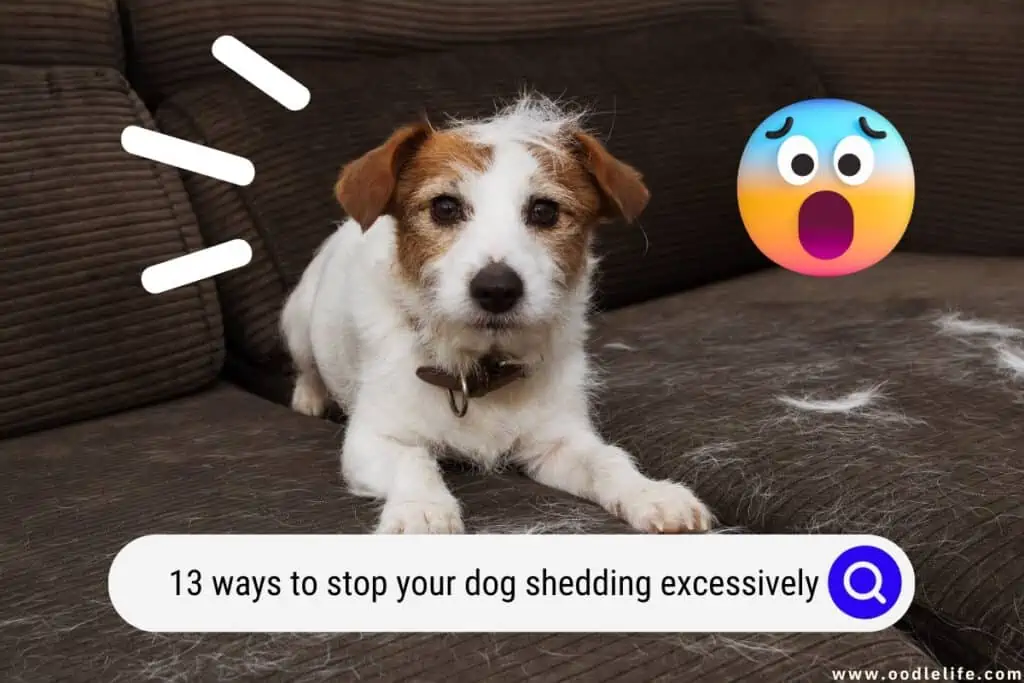
But excessive shedding on a puppy or dog may be controllable. You might be able to minimize the amount of shedding your dog does with a few tips and tricks. If you have a heavy shedder, keep reading to learn some dog shedding solutions.
Why Do Dogs Shed?
Shedding is a natural part of a dog’s life. A dog’s coat will go through natural cycles of growth and loss. Each pup’s shedding cycle will vary based on a few factors:
- Breed
- Health condition
- Seasons
- Environment
The main goal of a dog’s coat is to protect the skin and body from external impacts like cuts and scrapes, sun damage, and cold temperatures. The latter is a crucial job of the fur and the reason behind seasonal shedding; your dog needs a thicker coat in the winter.
As natural as most shedding is, some dogs shed excessively due to other underlying conditions. Your dog may have skin issues, allergies, stress, anxiety, or a nutritional deficit.
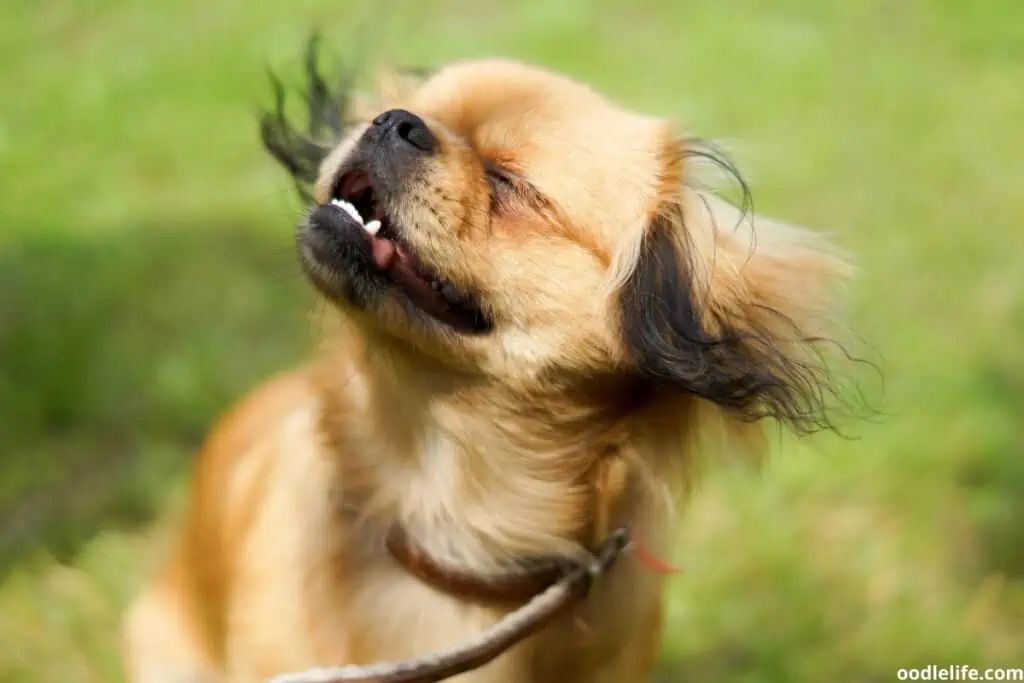
13 Tips To Minimize Shedding
Excessive shedding can be a real problem in your home. If you constantly sweep, vacuum, and dust, and you don’t own a pair of pants without dog hair permanently stuck to them, then you might need some dog shedding solutions.
Brush Your Dog Regularly
Regular grooming is an easy but often forgotten way to reduce the amount of hair your dog sheds around your home. When you brush through your dog’s coat, you remove loose, dead hair that may get caught or tangled in your dog’s fur.
Instead of waiting for your dog to drop loose hairs throughout your home, brush its coat once per week to remove large portions of hair at once. The less loose hair there is on your dog, the less it can spread.
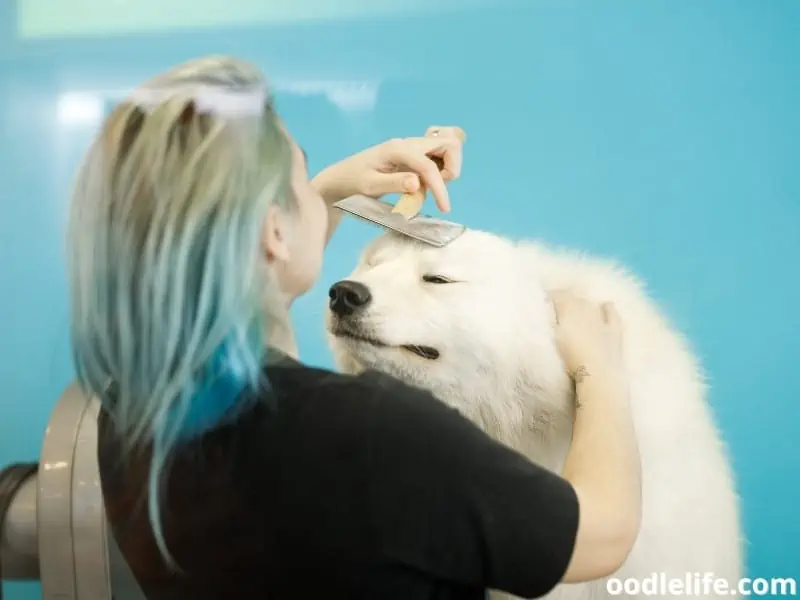
Use the Right Kind of Brush
Any kind of brushing is better than no brushing, but using the correct pet brush can increase your effect on excessive shedding. There are four main kinds of brushes:
- Bristle brush: Ideal for all coat types
- Wire-pin brush: Curly coats
- Slicker brush: Best for mats and tangles
- Rubber brush: Good for short-haired coats
You don’t have to spend much money on a dog brush, as long as you get the right kind for your breed.
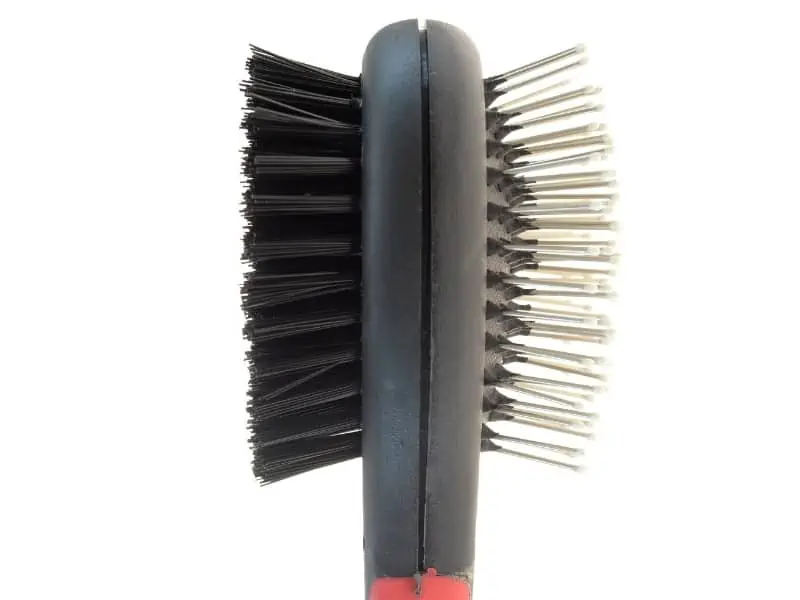
Get a Deshedding Blade
Deshedding blades use stainless steel tines to reach under the topcoat to the undercoat, where many loose hairs get trapped. These tools allow you to remove loose hairs that the average brush might not catch.
Try using a de-shedder on your dog’s coat once a week to get rid of loose hairs before they fall on your floor.
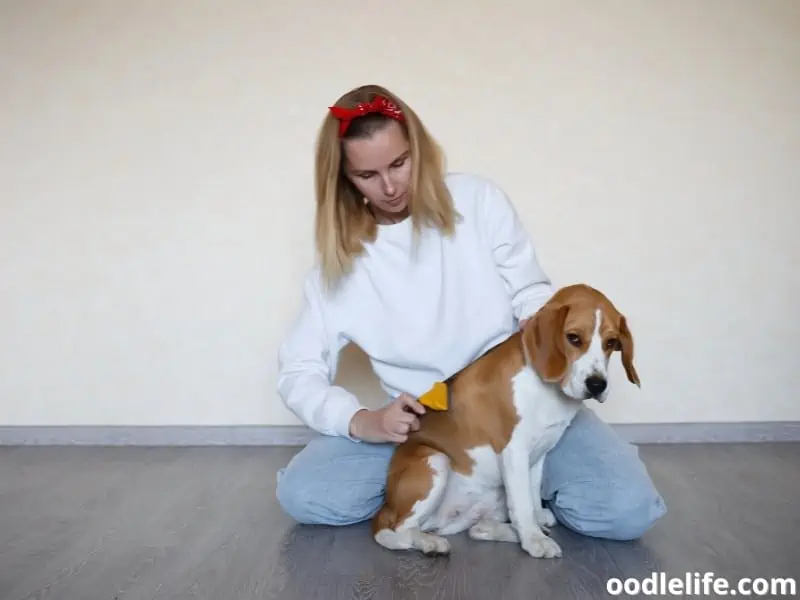
Give Baths Consistently
As you can see, grooming has a lot to do with minimizing your dog’s shedding. Aside from frequent brushing, giving your pooch consistent baths can help with excess fur.
Not only will bathing help remove dead hair before it has the chance to fall off your dog’s body, but it can also remove dead skin cells and reduce dander. Oatmeal shampoo works great and is excellent for your dog’s skin.
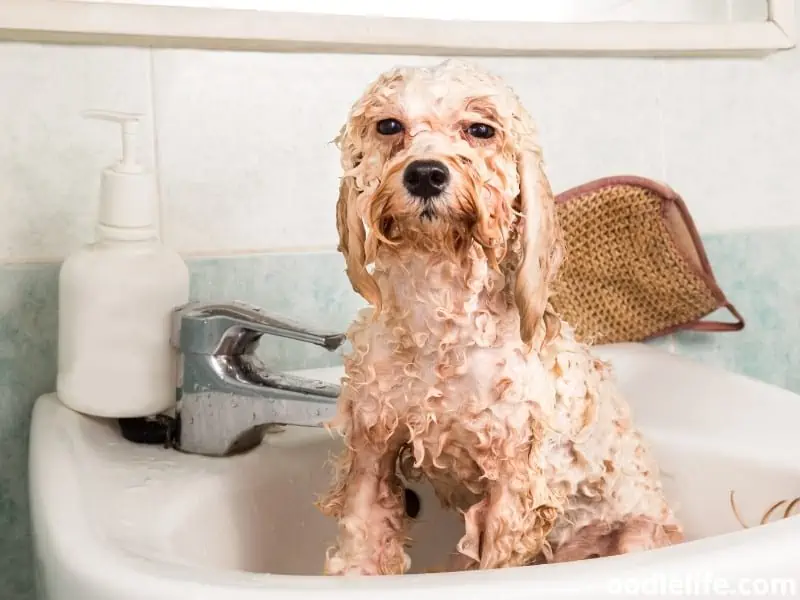
Add Olive Oil to Your Dog’s Diet
If you didn’t know, olive oil can benefit your dog’s skin and coat. Olive oil might do the trick if you’re concerned your dog might be over-shedding due to an unhealthy coat.
Olive oil contains Omega-3 fatty acids, which are known for being beneficial for hair and skin—among other things. Olive oil is safe to give to your dog in small amounts. Try adding just one tablespoon of it to your dog’s food daily.
You should consult your vet before making any diet changes, especially when they involve human-grade foods. So give them a quick call before trying this shedding solution.
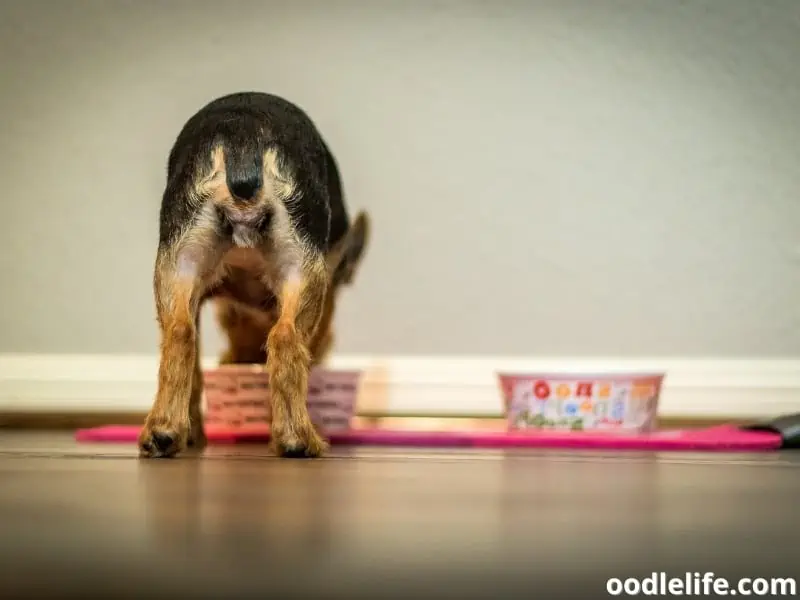
Make Sure Your Dog Gets Enough Water
Do you know the recommended amount of water that your dog should get daily? Your pup should generally drink about one ounce of water per pound of body weight. Of course, they’ll need even more if the weather is hot, they spend a lot of time outside, and they’re very active.
Dehydrated dogs can experience severe symptoms and, in extreme cases, death. On the other end of the spectrum, mild dehydration can dry out your dog’s skin. Dry skin may worsen shedding problems and lead to more significant hair loss.
Make sure your dog always has access to fresh water. If you notice your dog isn’t drinking enough, talk to your vet to explore why.
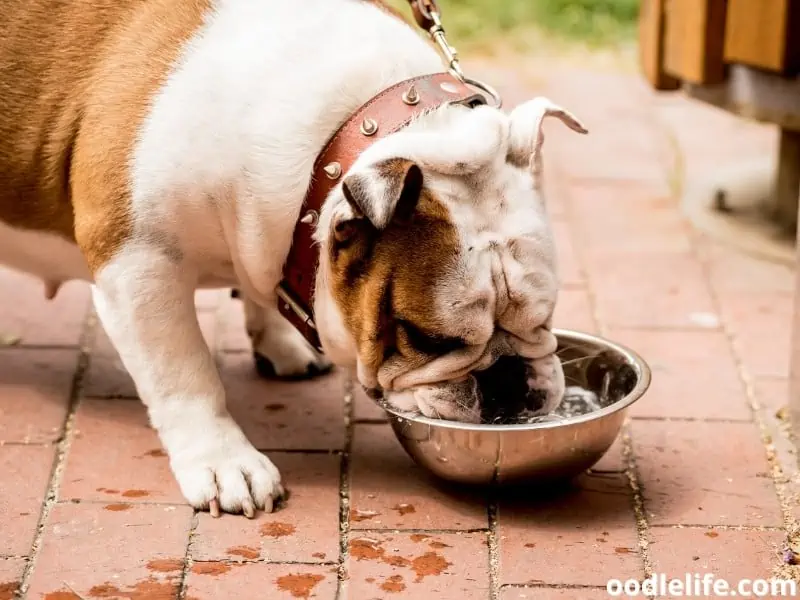
Check Out Your Dog’s Diet
A dog that sheds excessively may be malnourished. It’s not that it’s not eating enough; it’s that it’s not eating right.
A dog needs a healthy, balanced diet made up of protein, carbs, and good fats. Your furry friend’s diet is responsible for keeping all systems operating at their best capacity. This includes energy, muscle growth, brain function, teeth, immune systems, and more.
Good fats in your dog’s diet maintain healthy skin and coat.
Aim for a food that has few fillers, such as rice and grains, and includes a high-quality protein source. It should also have plenty of vitamins and minerals, along with Omega-3 fatty acids, to keep your dog’s coat growing healthy.
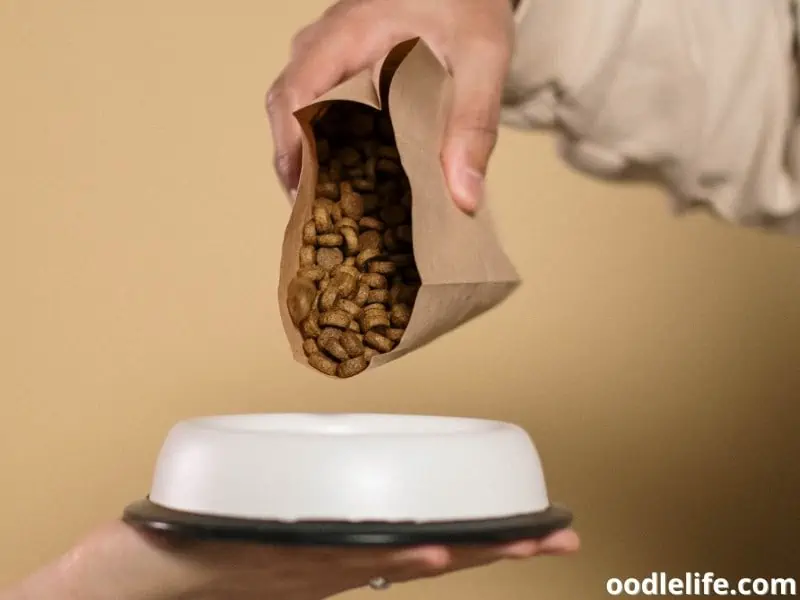
Treat Dry Skin With Coconut Oil
Dry skin is a common ailment in dogs. Not only can dry skin disrupt normal hair growth and lead to more shedding, but it can also cause your dog to lick, scratch, and bite itself more often. These actions can also make their hair shed more.
Coconut oil is a safe, easy, and effective way to moisturize dry skin. Use it topically and rub a small amount into your dog’s coat with your fingers. Let it sit for about 15 minutes, then rinse it off.
Another great way to use coconut oil is to buy natural shampoos that include coconut oil on the ingredient list. You can replace your old shampoo and work coconut oil into your regular grooming routine rather than adding another step.
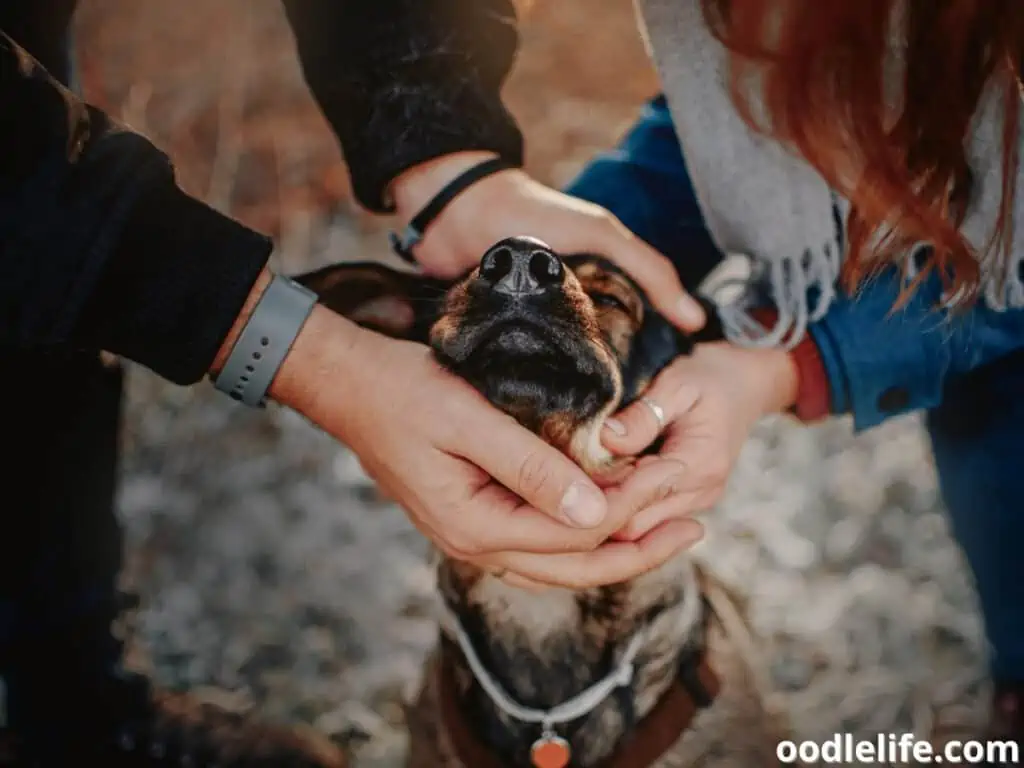
Try Adding a Skin and Coat Supplement
Supplements are common in the human world. We take all kinds of supplements to support a healthy diet and target specific issues, such as hair growth, digestive health, and muscle recovery.
But did you know there are supplements for dogs too? There are supplements specifically designed to improve skin and coat health, which can help reduce shedding.
Many of these supplements include helpful ingredients like Omega-3 and Omega-6 fatty acids in the form of fish oil. Adding a supplement to your dog’s diet can help fill in gaps causing excessive shedding.
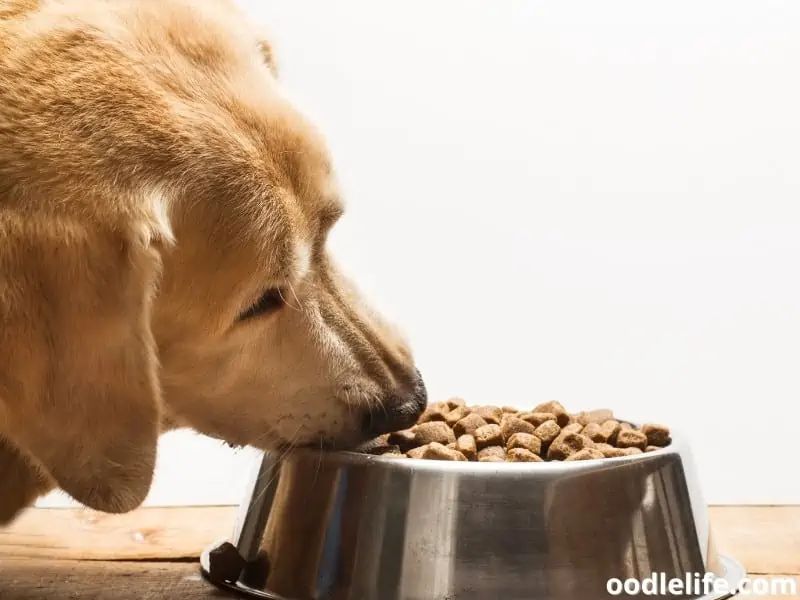
Regular Trims
Brushing and bathing can certainly help lessen shedding, but any dog with untrimmed fur is bound to leave clumps all over your house.
Reduce the appearance of dog fur on your blankets and sweatshirts by getting your pup trimmed regularly. If your dog has long, thick fur, a consistent haircut can help cut the volume of fur in your home.
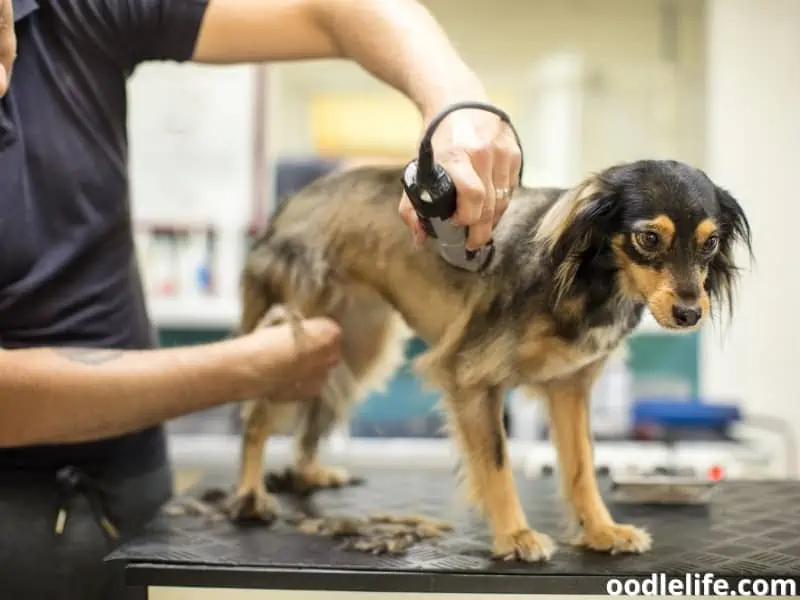
Try Flaxseed Oil
An easy and cost-effective solution to excessive shedding is flaxseed oil. Flaxseed oil offers the same benefits as fish oil—without the fishy burps from your pup.
Flaxseed oil is another oil that contains those helpful Omega-3 fatty acids, and by now, we all know how much these can impact skin and coat health. Flaxseed oil is also ideal for treating dandruff and inflamed skin, which can deter constant scratching.
Add one tablespoon of flaxseed oil to your dog’s food and see if that helps.
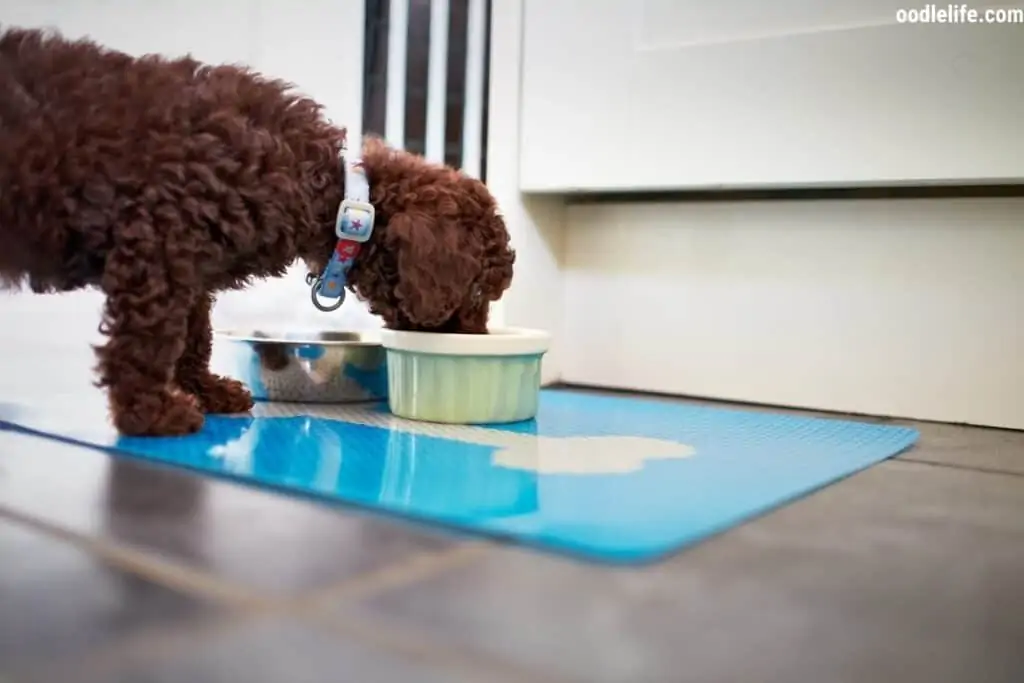
Apple Cider Vinegar
Apple cider vinegar, also known as ACV, has antifungal properties, which can help resolve skin issues on your dog, including ringworm.
Dilute the ACV with an equal part of water. Then, use a rag or a cotton ball to apply the ACV to your dog’s coat in patches that may be impacted by skin issues.
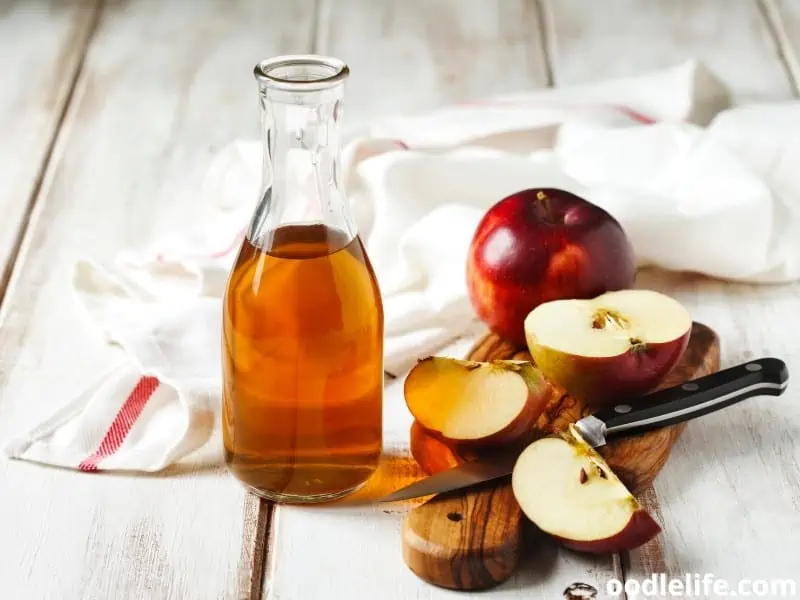
Talk to Your Vet
If you feel like you’ve tried every tip and trick in the book and nothing is working, it’s a good time to talk to your vet. Your dog’s excessive shedding may be a more significant problem than you initially thought. Your vet will have better answers or at least ways to find an answer.
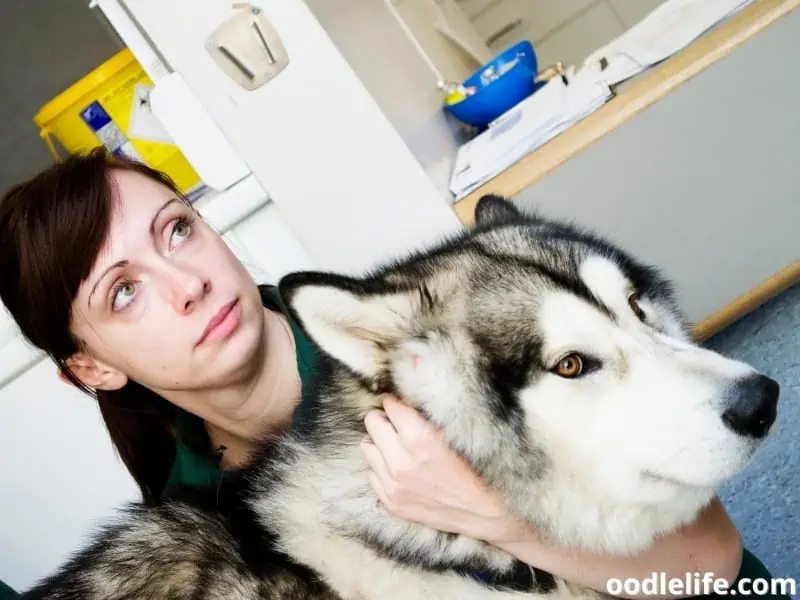
Final Thoughts
As much as we love our pups, we don’t always love the loose fur that comes with them. These dog shedding solutions should help you tame your canine’s coat so that they look great and you clean less.